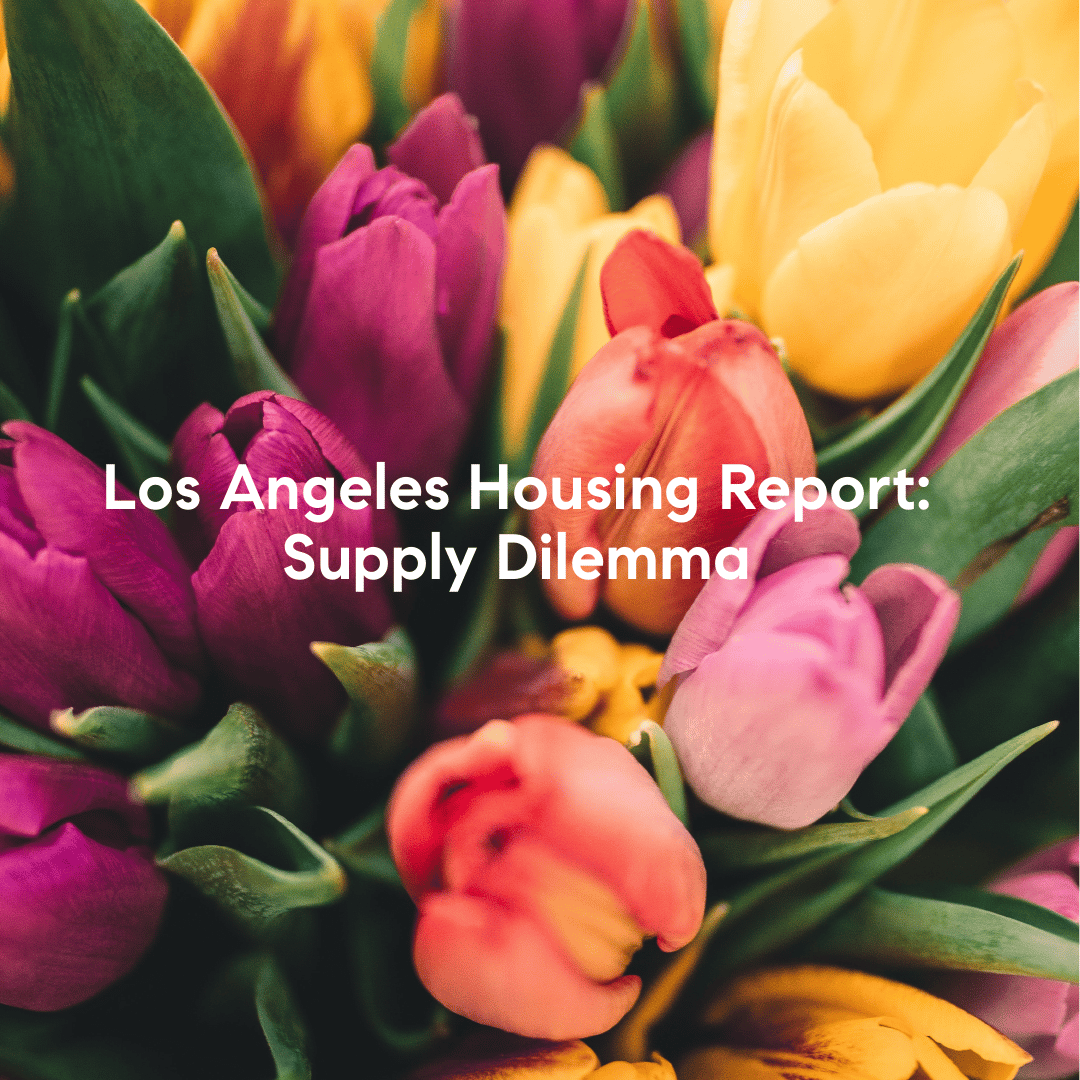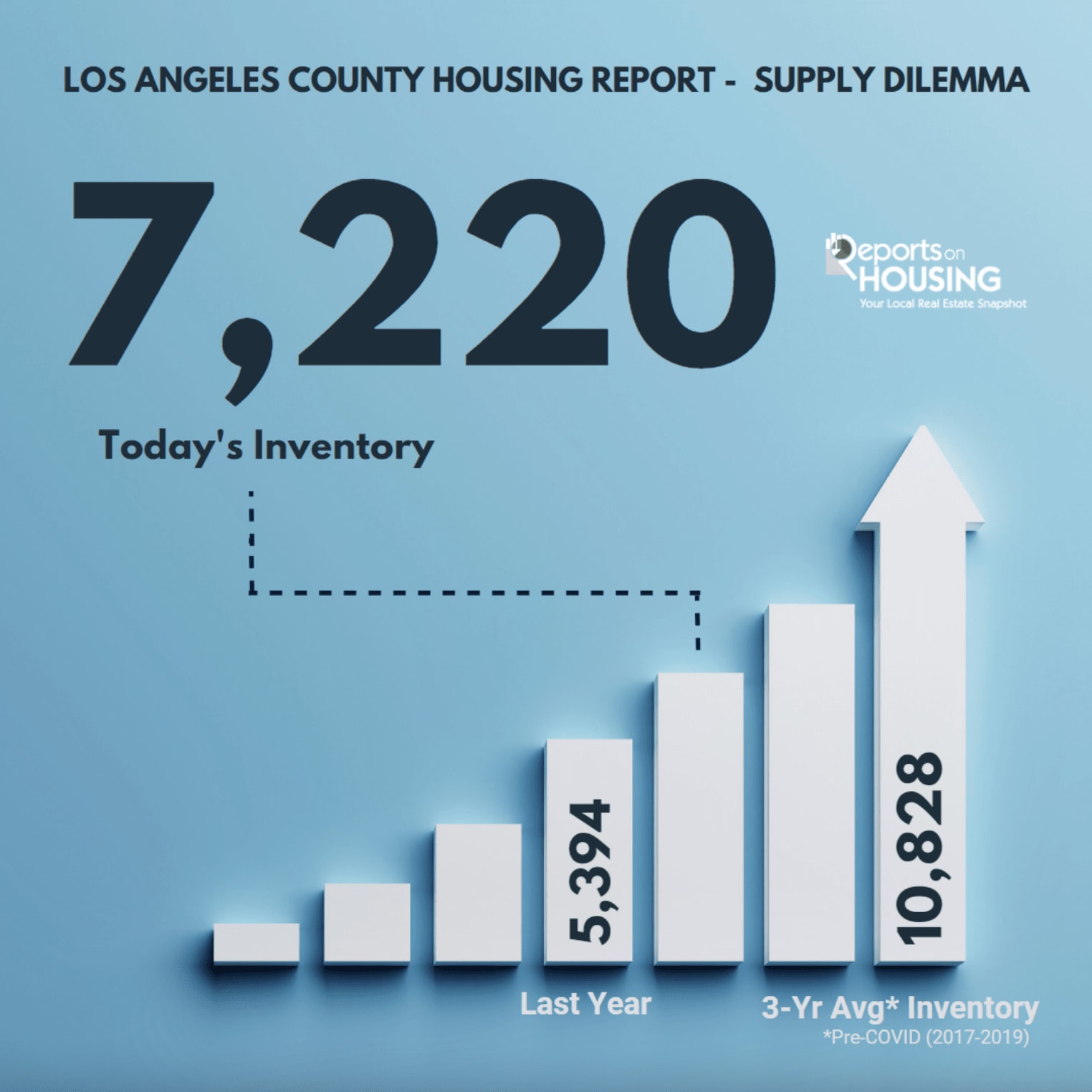Supply Dilemma
In the past few years, there has been a severe inventory crisis initially instigated by the pandemic and now due to the high mortgage rate environment.
Lack of FOR-SALE Signs
Since the pandemic, there have not been enough homes available, and 2023 is no different.
The pandemic lockdowns began three years ago, in March 2020. Life came to an abrupt halt. Instantly, grocery shelves were ransacked as everyone prepared for an indefinite time in their homes. Many aisles were empty, most notably the toilet paper aisle. There was a run on toilet paper, and it lasted throughout 2020. In desperation, people resorted to shopping for rolls on eBay or Amazon and were willing to pay whatever price. It was simple supply and demand.
Similarly, the housing shelves have been seemingly empty since entering the pandemic, with very few homes available compared to pre-COVID inventory levels. In 2020 and 2021, fewer homeowners opted to sell their homes amid the pandemic. Los Angeles County had 7% fewer sellers in 2020 compared to the 3-year average before COVID-19 (2017 to 2019), or 6,100 less. In 2021, it was 2% less, or 1,700 missing sellers. Surging demand had an even more significant impact on shrinking the supply of available homes. From March 2020 to January 2021, rates reached 17 record lows. As rates plummeted, demand surged. As a result, the inventory reached record lows in 2020 and 2021.
The inventory finally began to rise in 2022 as rates soared from 3.25% at the start of the year to the mid-5s in June and July. Yet, rates rose further, surpassing 6% in September and 7% in October. Since 89% of all Californians have rates at or below 5% and 71% have rates at or below 4%, only some homeowners have been willing to give up their incredibly low fixed-rate mortgages and sell their homes. This “hunkering down” effect has resulted in a growing number of homeowners staying put. In 2022, there were 14,750 fewer sellers, 16% less.
Active Listings
The active listing inventory in the past couple of weeks decreased by 380 homes, down 5%, and now sits at 7,220 homes, its lowest reading since May of last year and the largest drop of the year. In February, 37% fewer homes came on the market compared to the 3-year average before COVID (2017 to 2019), 2,494 less. Last year, there were 5,394 homes on the market, 1,826 fewer homes, or 25% less. The 3-year average before COVID (2017 to 2019) was 10,828, or 50% more.
Demand
Demand, the number of pending sales over the prior month, decreased by 40 pending sales in the past two weeks, down 1%, and now totals 3,723. Last year, there were 5,364 pending sales, 44% more than today. The 3-year average before COVID (2017 to 2019) was 5,116, or 37% more.
Los Angeles County Housing Summary
- The active listing inventory in the past couple of weeks decreased by 380 homes, down 5%, and now sits at 7,220 homes, its lowest reading since May of last year and the largest drop of the year. In February, 37% fewer homes came on the market compared to the 3-year average before COVID (2017 to 2019), 2,494 less. Last year, there were 5,394 homes on the market, 1,826 fewer homes, or 25% less. The 3-year average before COVID (2017 to 2019) was 10,828, or 50% more.
- Demand, the number of pending sales over the prior month, decreased by 40 pending sales in the past two weeks, down 1%, and now totals 3,723. Last year, there were 5,364 pending sales, 44% more than today. The 3-year average before COVID (2017 to 2019) was 5,116, or 37% more.
- With the supply falling faster than the drop in demand, the Expected Market Time, the number of days to sell all Los Angeles County listings at the current buying pace, decreased from 61 to 58 days in the past couple of weeks. It was 30 days last year, much stronger than today.
- For homes priced below $750,000, the Expected Market Time decreased from 43 to 42 days in the past couple of weeks. This range represents 32% of the active inventory and 45% of demand.
- For homes priced between $750,000 and $1 million, the Expected Market Time decreased from 53 to 49 days. This range represents 19% of the active inventory and 22% of demand.
- For homes priced between $1 million to $1.5 million, the Expected Market Time decreased from 56 to 51 days. This range represents 14% of the active inventory and 16% of demand.
- For homes priced between $1.5 million to $2 million, the Expected Market Time increased from 74 to 75 days. This range represents 8% of the active inventory and 7% of demand.
- For homes priced between $2 million and $3 million, the Expected Market Time in the past couple of weeks decreased from 90 to 86 days. For homes priced between $3 million and $4 million, the Expected Market Time increased from 154 to 161 days. For homes priced between $4 million and $8 million, the Expected Market Time decreased from 246 to 190 days. For homes priced above $8 million, the Expected Market Time increased from 633 to 646 days.
- The luxury end, all homes above $2 million, account for 24% of the inventory and 11% of demand.
- Distressed homes, both short sales and foreclosures combined, made up only 0.7% of all listings and 0.9% of demand. Only 33 foreclosures and 20 short sales are available to purchase today in all of Los Angeles County, 53 total distressed homes on the active market, up one in the past two weeks. Last year there were 33 total distressed homes on the market, slightly fewer than today.
- There were 2,619 closed residential resales in January, 45% less than January 2022’s 4,787 closed sales. January marked a 21% drop compared to December 2022. The sales-to-list price ratio was 98.9% for all of Los Angeles County. Foreclosures accounted for just 0.6% of all closed sales, and short sales accounted for 0.1. That means that 99.3% of all sales were good ol’ fashioned sellers with equity.





